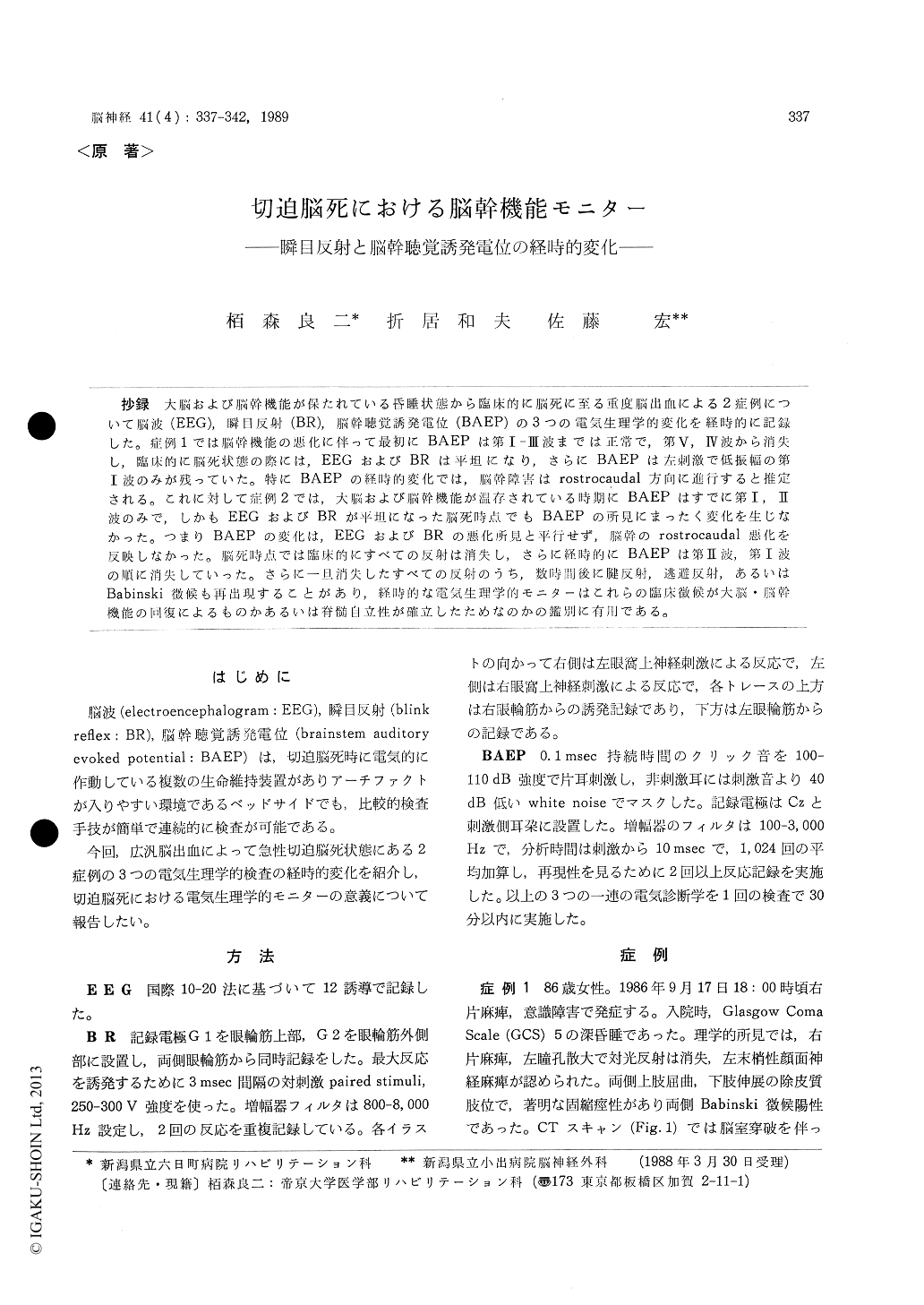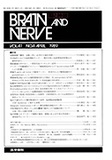Japanese
English
- 有料閲覧
- Abstract 文献概要
- 1ページ目 Look Inside
抄録 大脳および脳幹機能が保たれている昏睡状態から臨床的に脳死に至る重度脳出血による2症例について脳波(EEG),瞬目反射(BR),脳幹聴覚誘発電位(BAEP)の3つの電気生理学的変化を経時的に記録した。症例1では脳幹機能の悪化に伴って最初にBAEPは第I-III波までは正常で,第V,IV波から消失し,臨床的に脳死状態の際には,EEGおよびBRは平坦になり,さらにBAEPは左刺激で低振幅の第I波のみが残っていた。特にBAEPの経時的変化では,脳幹障害はrostrocaudal方向に進行すると推定される。これに対して症例2では,大脳および脳幹機能が温存されている時期にBAEPはすでに第I,II波のみで,しかもEEGおよびBRが平坦になった脳死時点でもBAEPの所見にまったく変化を生じなかった。つまりBAEPの変化は,EEGおよびBRの悪化所見と平行せず,脳幹のrostrocaudal悪化を反映しなかった。脳死時点では臨床的にすべての反射は消失し,さらに経時的にBAEPは第II波,第I波の順に消失していった。さらに一旦消失したすべての反射のうち,数時間後に腱反射,逃避反射,あるいはBabinski徴候も再出現することがあり,経時的な電気生理学的モニターはこれらの臨床徴候が大脳・脳幹機能の回復によるものかあるいは脊髄自立性が確立したためなのかの鑑別に有用である。
Serial changes of EEG, BR and BAEP record-ings were obtained over a period of two days on two patients who had suffered massive cerebral hemorrhage while their clinical condition evolved from coma with evidence of preserved cerebral and brainstem functions to a state meeting the criteria of brain death. As clinical evidence of deteriorating brainstem function became apparent in case 1, first wave IV and V components of BAEP disappeared while waves I to III were normal. Finally, when clinical criteria of brain death were fulfilled, the BAEP response was restricted to wave I with small amplitude to stimulation of left ear only. These serial changes were likely consistent with gradual dissolution of brainstem function in a rostrocaudal direction. By contrast, in case 2, the BAEP response was restricted to waves I and II and was stationary in the whole process of impending brain death in no association with some preservation of cerebral and brainstem function. The changes of BAEP was not parallel to the progressive dete-rioration of EEG and BR. After meeting clinical criteria of brain death, complete abolition of waves II and I was sequential in that order, and then Babinski sign besides withdrawal and deep tendon reflexes may rivive in the extremities. Monitoring of serial electrophysiological changes is helpful in the course of impending brain death to deter-mine whether rivival of Babinski sign is due to recovery of cerebral-brainstem dysfunction or due to establishment of spinal autonomy.

Copyright © 1989, Igaku-Shoin Ltd. All rights reserved.


